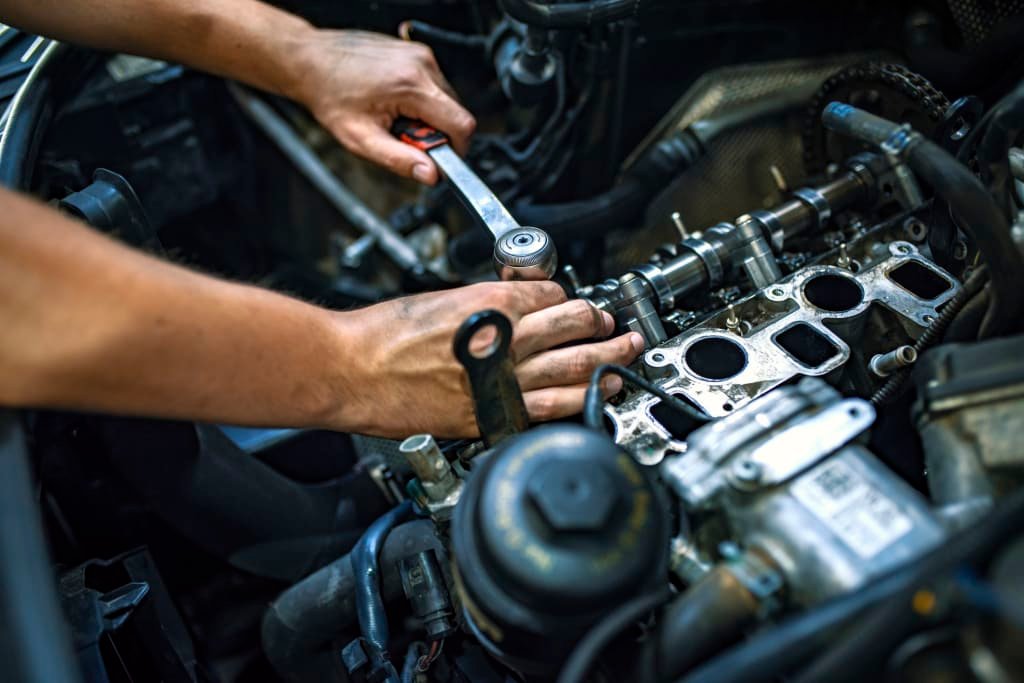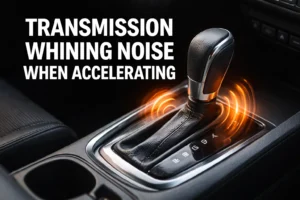I still remember the first time I heard that strange, high-pitched whine while pressing the gas pedal in my old 2012 Ford Escape. It started faint—just a slight hum under the hood when I picked up speed. But over time, it got louder and more consistent. That little noise quickly turned into a big concern.
If your car makes a whining sound when you accelerate, you’re not alone. It’s a common issue across all types of vehicles—sedans, trucks, SUVs, and even hybrids. Whether you’re driving a newer model or a high-mileage vehicle, any unexpected noise can signal a bigger problem underneath the surface.
In this guide, I’ll walk you through every possible reason your car might be whining when accelerating. I’ll also explain how to figure out what’s wrong, what you can do about it, and how much repairs might cost—based on real-world examples and research. Let’s dive in.
Understanding the Whining Sound
Before we jump into causes, it’s important to describe what a whining noise actually sounds like in automotive terms.
- Pitch: High-pitched, almost like a vacuum or distant siren.
- When it occurs: Only when accelerating—not when idling or coasting.
- Where it comes from: Often from under the hood, near the engine or transmission.
Whining isn’t just annoying. It’s your vehicle’s way of signaling that something mechanical is wearing down, misaligned, or failing altogether.
Common Causes of Whining During Acceleration
a) Power Steering System
One of the most common sources of whining is the power steering pump. When the fluid is low or the pump is starting to fail, it may emit a whining or groaning sound—especially when you accelerate or turn the wheel.
Signs it’s the power steering:
- Noise changes when turning
- Fluid is dark or low
- Whining increases with RPM
What to do: Check the power steering fluid reservoir and top it off if needed. If the fluid is old or dirty, it might be time for a flush. A failing pump may need replacement.
b) Transmission Issues
If you hear the whining coming from the center or rear of the vehicle, the issue could lie within the transmission. Automatic transmissions, especially CVTs, tend to whine when the fluid is low or internal components wear out.
Possible causes:
- Low or old transmission fluid
- Worn torque converter
- Worn gears or bearings
What to do: Start by checking the transmission fluid. If it’s dark, burnt, or low, a flush might help. Otherwise, a mechanic may need to inspect the internal gears.
c) Serpentine Belt and Pulleys
Your serpentine belt powers important systems like the alternator, water pump, and AC compressor. If it’s worn or misaligned, it can produce a sharp whining noise.
Symptoms:
- Noise on startup or during acceleration
- Visible cracks in the belt
- Tensioner or pulley wear
Solution: Inspect the belt for cracks or glazing. A loose or old belt should be replaced. Don’t forget to check the tensioner and pulleys, which can also cause whining.
d) Wheel Bearings or Differential
Whining that increases with speed and doesn’t depend on engine RPM might be coming from your wheel bearings or differential. These components are key in moving power from the transmission to your wheels.
How to tell:
- Noise changes when turning left/right
- Vibration in the steering wheel
- Rear-end whine in RWD or AWD vehicles
Next steps: If it’s the differential, it could be low on fluid or have internal wear. A technician can check fluid levels or inspect the gears inside. Wheel bearings will need to be replaced.
e) Alternator or Water Pump
Under the hood, your alternator and water pump are belt-driven components that can start to whine when their bearings go bad.
Clues:
- Whine follows engine RPM
- Squealing on cold start
- Battery light or overheating
Fix: Listen closely near each component with the engine running. Replacing a failing alternator or water pump early can save a bigger breakdown later.
How to Diagnose the Problem Yourself
Here’s a simple step-by-step way to narrow down the issue before taking your car to a shop:
- Listen carefully: When does the noise start? Only during acceleration? Does it change when turning?
- Pop the hood: With the engine running, listen closely to the belts, pulleys, and accessories.
- Check fluid levels: Inspect transmission fluid, power steering fluid, and engine oil.
- Test drive: Try accelerating in neutral. If the noise disappears, it may not be engine-related.
- Use a mechanic’s stethoscope: This handy tool helps isolate sounds from specific parts.
If you’re unsure, record a video of the noise and show it to a mechanic. Many issues can be diagnosed by sound alone.
Can You Keep Driving with a Whining Noise?
It depends on the cause. If the noise is from something minor, like a belt, you might be able to keep driving short distances. But if it’s related to the transmission, power steering, or differential, continuing to drive can lead to bigger—and more expensive—repairs.
Risky to ignore:
- Transmission whining
- Differential gear noise
- Power steering pump issues
Safer to monitor briefly:
- Loose serpentine belt
- Worn pulleys
- Minor bearing wear
Cost of Repairs Based on the Cause
Here’s a breakdown of average repair costs in the U.S. (these can vary by car make/model and location):
| Issue | Approx. Cost |
| Power Steering Fluid Top-Up | $30–$70 |
| Power Steering Pump Replacement | $400–$800 |
| Transmission Fluid Flush | $150–$300 |
| Transmission Repair | $1,200–$4,000 |
| Serpentine Belt Replacement | $100–$200 |
| Wheel Bearing Replacement | $300–$600 per wheel |
| Differential Repair | $400–$1,500 |
| Alternator Replacement | $400–$800 |
| Water Pump Replacement | $350–$700 |
Always get a second opinion or quote from another shop before agreeing to major repairs.
When to See a Mechanic
If your car is:
- Making louder noises over time
- Losing performance while accelerating
- Showing warning lights (like battery, oil, or check engine)
- Leaking fluid or overheating
…it’s best to get it checked out soon. Noise usually means something is wearing out, and waiting too long might leave you stranded.
Preventive Maintenance Tips
Avoiding whining sounds in the future is often just a matter of proper care. Here are a few simple things you can do:
- Change your fluids on schedule (especially transmission and power steering)
- Check and replace belts every 60,000 to 100,000 miles
- Inspect pulleys and tensioners when changing belts
- Listen for noises regularly—your ears are great tools
- Don’t ignore warning signs like fluid leaks or slipping gears
Real Owner Experiences
Many car owners have dealt with this issue. For example:
“I had a 2016 Subaru Outback that made a soft whining noise only when accelerating on hills. Turned out to be a worn CVT belt, and the dealer caught it early.” — Dave M., Oregon
“My 2014 Chevy Cruze started whining one morning, and I assumed it was the belt. But it ended up being the power steering pump. Glad I didn’t ignore it.” — Carla N., Texas
Hearing other people’s stories can help you spot patterns. Every make and model has its quirks.
A whining noise when you hit the gas might sound like a minor annoyance, but it’s often a sign that your vehicle needs attention. Whether it’s a slipping belt, low fluid, or something deeper in the transmission or drivetrain, catching it early can save you time, stress, and money.
You don’t have to be a mechanic to understand your car’s symptoms. Just listen carefully, do a little investigating, and take action when needed. Your car will thank you for it.



